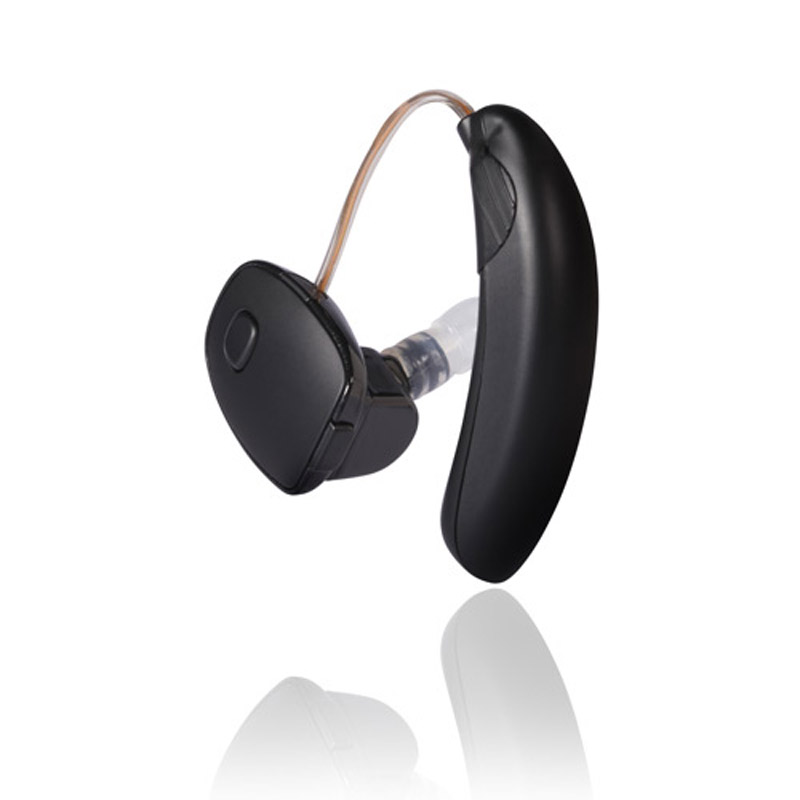
Some of the links on this page may link to our affiliates. Learn more about our ad policies.
Best Hearing Amplifiers
Updated on: January 2023

Audiorange
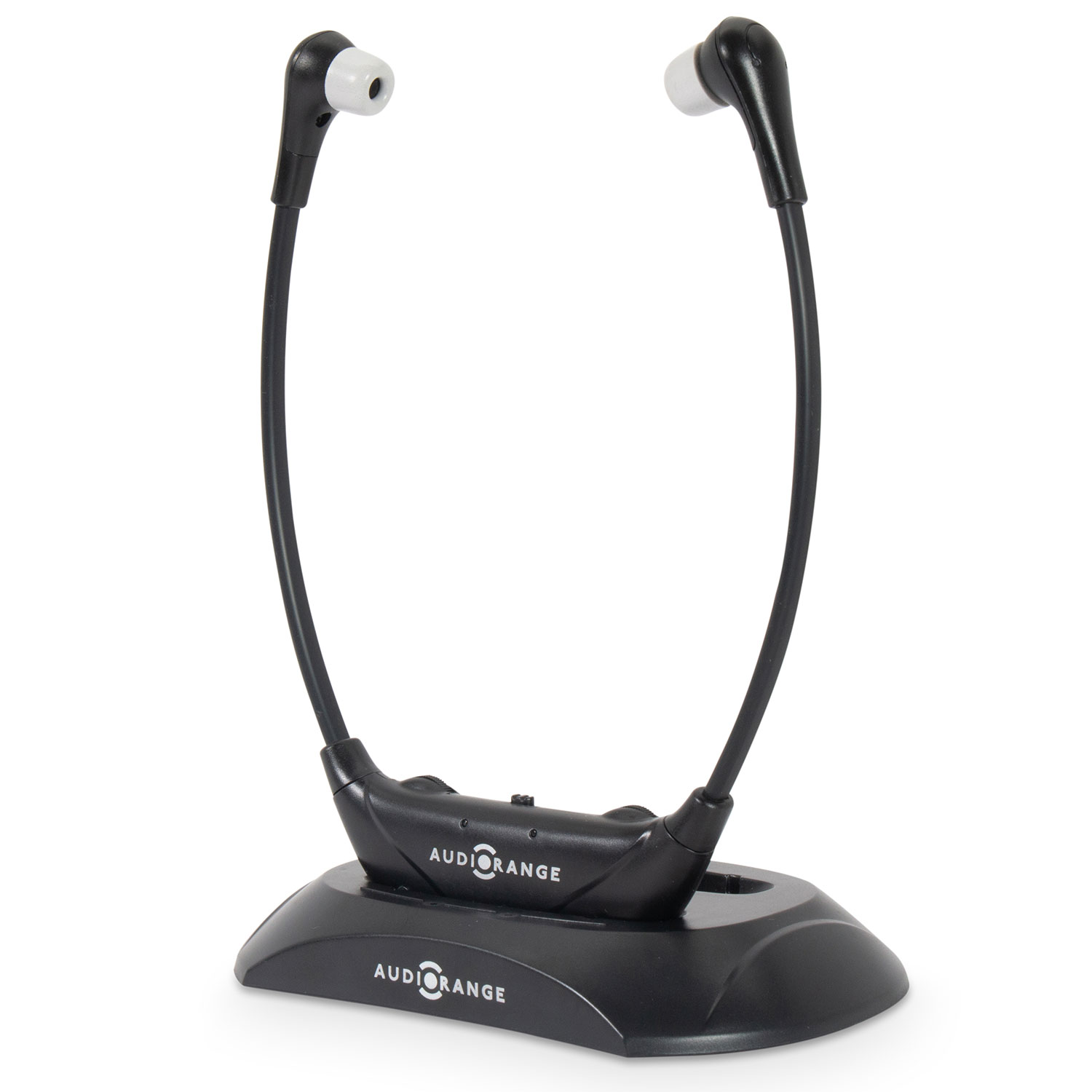
Audiorange ITE-1000 Wireless TV Headphone
Banglijian
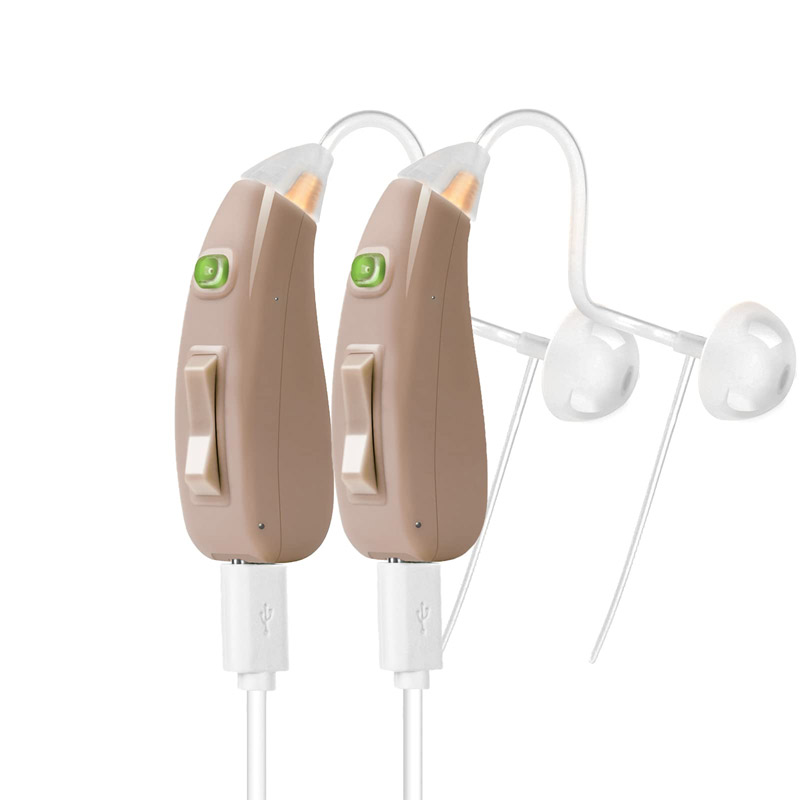
Banglijian Hearing Amplifier ZIV-201A
Tweak Hearing
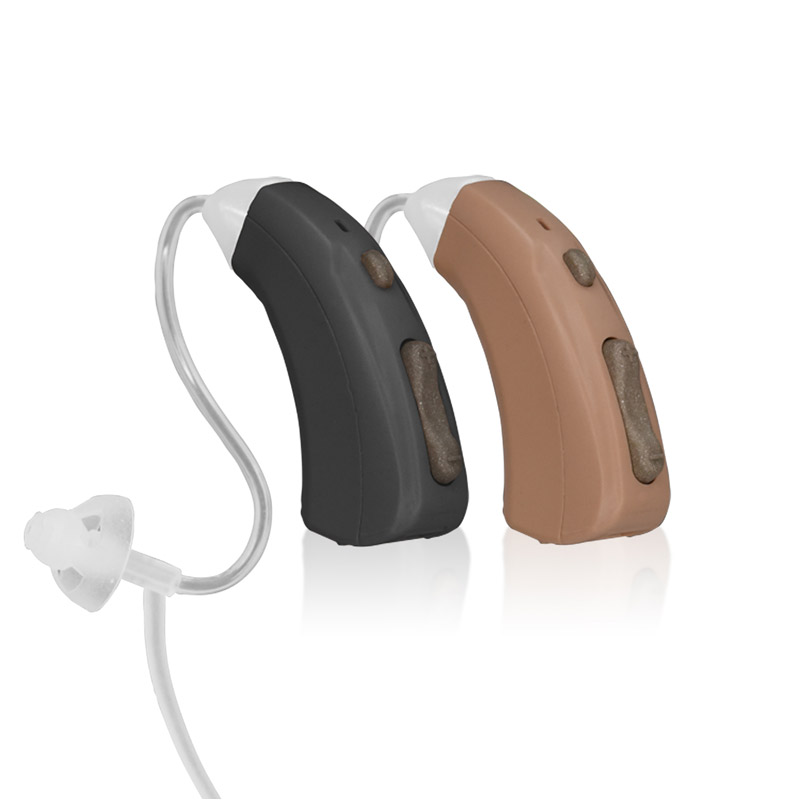
Tweak Focus+T Hearing Amplifier
As we age, we tend to lose our ability to hear as well as we once did. It can be so gradual that you don’t even realize it until someone asks you to turn the TV down or you start missing parts of conversations. There are plenty of listening devices on the market to help you hear better and avoid the volume control argument and keep you from having to say “what?” over and over.
One option is a personal hearing amplifier, also known as a personal sound amplifier (PSA). They amplify or magnify the sound you’re hearing while reducing or cutting out the background noise. They are small and portable, and unlike traditional hearing aids, you can purchase them without going through a doctor. The ones on the market today are well-designed and are great options for anyone who has mild to moderate hearing loss.
Find What You Need
Top Hearing Amplifiers at a Glance
| AudioRange ITE-1000 Wireless TV Headphone | Sound World Solutions CS50+ | Tweak Focus+T Hearing Amplifier | Banglijian Hearing Amplifier Ziv-201A | Otofonix Elite Digital Hearing Amplifier | |
|---|---|---|---|---|---|
 |
 |
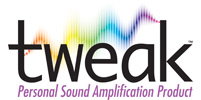 |
 |
 |
|
| Cost | Starting at $129 | Starting at $300 | Starting at $275 | Starting at $125 | Starting at $200 |
| Usage Time | Up to 8 Hours | Up to 12 Hours | 4-7 Days | 20-24 Hours | 4-7 Days |
| Wireless | |||||
| Warranty | One-Year Limited Warranty | 90-Day Warranty | 6-Month Warranty | 3-Year Manufacturer Warranty | One-Year Warranty |
| Learn More | Learn More | Learn More | Learn More | Learn More |
Types of TV Listening Devices
Personal hearing amplifiers or PSAs will significantly enhance and allow you to hear sounds from all frequencies you couldn’t hear before. Like a microphone – they pick up the noises around you and transmit them through a tiny speaker in your device. Easy to set up, use, and maintain hearing amplifiers and come in many different styles, shapes, and sizes, depending on the type.
Over-the-Ear Headphones
This type of personal sound amplifier fits like a standard pair of headphones. An adjustable headband is worn over the top of your head and cushioned ear pads cover your ears.
In-the-Ear Headphones
This type utilizes either an adjustable band worn on your head or behind the neck. Instead of ear pads, you have earbuds that fit inside your ear canal and are generally easy to manipulate for maximum comfort.
Behind-the-Ear Device
This type of personal sound amplifier is similar to a Bluetooth device or medical-grade hearing aid. It’s small and fits snugly around the top of your ear, connecting to a tiny tube that leads to an ear dome that fits inside your ear canal. These are generally side of the ear specific – so when purchasing, you have to choose if it’s for your left or right ear. And if you want to buy one for each ear, you’ll have to buy them separately.
Improving Sound for the Hearing Impaired
When deciding which personal sound amplifier is best for you, you’ll want to consider your budget first. The cost can range from $125 to well over $500. Even at the high end, personal sound amplifiers are much cheaper than hearing aids, but they are not covered by insurance as they aren’t medical devices and can be a big hit to your wallet.
They are all generally small and portable but can still range in size and functionality. There are some types best designed for watching TV and having a conversation – others can be worn all day and used in various situations. So, you’ll want to consider what your primary purpose for the device will be.
Battery usage is another significant consideration. Some personal sound amplifiers work on a rechargeable battery, while others require hearing aid batteries. Rechargeable batteries can last for several hours while hearing aid batteries can last for several days. You’ll want to think about if you’re going to worry about the extra cost of hearing aid batteries and the potential of being in a situation where you run out of batteries and need them.
You’ll want to look for an amplifier that offers at least a 30-day, money-back return policy. Some offer up to 45 days. That will give you plenty of time to test out the device and see if it’s right for you and return it and get your money back if it’s not.
Some personal sound amplifiers work as headphones; others are similar to hearing aids in how they fit around your ear and into your ear canal. So, it’s crucial to determine what’s most comfortable for you based on how many hours a day you think you’ll be using it. Something else to keep in mind – with the ones that fit around the back of your ear and into your ear canal, when purchasing – you’ll often have to choose which ear you want to wear it in because not all of them are interchangeable.
What are the Best Hearing Amplifiers?
There are plenty of personal sound amplifiers on the market to help anyone with mild to moderate hearing loss. Researching the brands, choices, and features can become overwhelming. This review should help you narrow down the list of options by providing detailed information on what we consider the best personal sound amplifiers on the market today.
We focused on devices that stood out for ease of use and convenience that would benefit anyone with age-related hearing loss. We focused on simple to set up products that promise long battery life, are backed by consistent positive user reviews, and are noted for improved sound clarity specifically for seniors.
Featured Reviews
- Best TV Sound Amplifier – AudioRange ITE-1000 TV Headphones
- Best Bluetooth Enabled Amplifier – Sound World Solutions CS50+
- Most Discreet Amplifier – Tweak Focus+T Hearing Amplifier
- Best On A Budget – Banglijian Hearing Amplifier Ziv-201A
- Most Versatile – Otofonix Elite Digital Hearing
Audiorange
Audiorange ITE-1000 TV Headphones
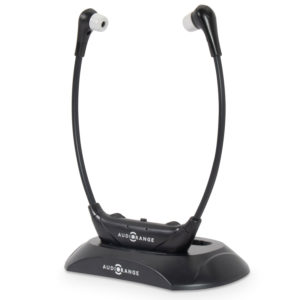
- Easy to use and setup
- Solo and dual options
- Compatible with most TVs and all streaming services and devices
- 30-day money-back guarantee
- One-year limited warranty
Our pick for the best TV sound amplifier is the AudioRange ITE-1000 TV Headphones. These headphones fit in the ear canal – similar to hearing aids. It’s easy to set up and use and comes in two options – a single or dual headphone set. The ITE-1000 is compatible with nearly every TV on the market today. It also works with all streaming services and devices. But if you have a pacemaker, you’ll have to check with your doctor to see if you can use the ITE-1000.
The ITE-1000 Solo costs $129.99 and comes with everything you need to set it up. The headphones run on a rechargeable battery that takes two hours to charge but can last up to eight hours on a full charge. You don’t have to sit in front of the TV to use the device – the ITE-1000 has a roaming range of up to 100 feet, so you can move freely about your home and still hear the TV.
The standard rubber earbuds included are comfortable, but you can upgrade to earbuds with memory foam for an extra cost for maximum comfort. The earbuds work off a wireless transmitter that sends a signal from the TV, and they connect to a headset hub that can be worn in front or behind your neck. The ITE-1000 also has a mic/sound amplifier so you can have a conversation without removing the headset. A built-in microphone mutes the TV in your earbuds and amplifies the sound around you.
The ITE-1000 is a great option to watch TV and still have a conversation with a spouse or loved one, but it doesn’t have as many uses as some other personal sound amplifiers on our list.
Sound World Solutions
Sound World Solutions CS50+
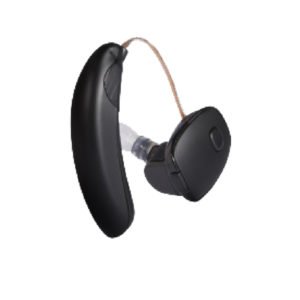
- 45-day return window
- Bluetooth-enabled
- Customizable sound modes
- Includes two rechargeable batteries
The Sound World Solutions CS50+ is Bluetooth-enabled, so it not only amplifies sound from the TV, but you can stream music and take calls with it. It comes with three built-in amplification presets, but you can also personalize the amplification you need through its Customizer App you download on your smartphone. You can adjust the treble, bass, and mid-range frequencies separately to your specific liking. There’s also a quick hearing test through the app to help you determine the settings that work best for you.
The CS50+ is a little pricey – it will cost you 300 dollars or more. But it does work with a rechargeable battery that will last up to 12 hours on a single charge. It comes with everything you need to set it up – including three different-sized ear tips for maximum comfort and fit. It even includes an ear tip cleaning tool to help you clean it regularly.
In addition to smartphones, it will pair with computers and all TVs and audio/visual equipment. But unlike some sound amplifiers that work as headphones, the CS50+ only comes with one device, so if you feel like you need one for both ears, you’ll have to purchase another, which can get expensive.
Tweak Hearing
Tweak Focus+T Hearing Amplifier

- Five-Warranty For Parts And Labor
- 200 Hours Of Battery Life
- Impact-Resistant Case
- Belt Clip For Easy Transport
- Lightweight
- Lanyard For Easy Transport
The Tweak Focus+T is one of the most discreet personal sound amplifiers in our list of top picks. The device is small, made primarily of transparent materials, and fits snugly over the top of the ear, so it’s almost invisible to anyone around you. Unlike some of our other picks, this device doesn’t come with a rechargeable battery. It works on size 312 hearing-aid batteries, which will last for up to seven days. Four batteries are included with the device when it’s purchased.
Designed by an audiologist, the Tweak Focus+T has four different amplification settings, allowing you to pick the right one. Mode four works well for anyone who has a greater degree of hearing loss. You can buy the device as a single unit or a pair, depending on whether you want a device for one or both ears. The Tweak Focus+T is on the higher end of the price range – starting at 275 dollars but can be used to help you hear the TV, conversations, or music better. It has a telecoil feature to help you hear better when you are talking on the phone.
Banglijian
Banglijian Hearing Amplifier ZIV-201A
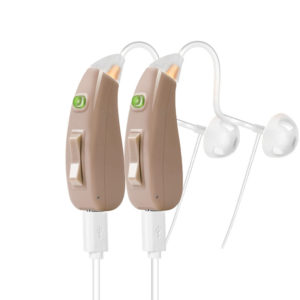
- 45-day money-back guarantee
- 3-year manufacturer warranty
- Free repair
- 20-24-hour battery life
The Banglijian Hearing Amplifier Ziv-201A is designed for anyone with mild to moderate hearing loss. The manufacturer clarifies this personal sound amplifier is not a good choice if you have more severe hearing loss. Created by an audiologist, the Ziv-201A is easy and comfortable to wear. It’s made of durable materials and runs on a rechargeable battery that can last between 20 and 24 hours when fully charged. (which generally only takes a couple of hours) Instead of a standard recharging base that plugs into an electrical outlet, the battery charges through a USB included.
The package only comes with one device, but it does come with accessories that make it possible to wear on either ear. The Ziv-201A has five amplification levels, and prices start at a budget-friendly $125. It has a memory feature that saves your volume selections even when you turn the device off, and it comes with a few ear tips to ensure the perfect fit for you. The cleaning brush included is convenient for proper maintenance.
Otofonix
Otofonix Elite Digital Hearing Amplifier

- 45-day money-back guarantee
- One-year warranty
- Parts and components made in the US
- US phone-based support
The Otofonix Elite Digital Hearing Amplifier is highly versatile. It has a built-in noise reduction and feedback canceling and allows you to choose from 10 volume levels and four preset programs. It’s small, easy to use, and comes with everything you need to set it up. The Otofonix Elite has a memory recall feature that will store your volume controls when it’s powered off or your changing batteries. The battery is not rechargeable. The Otofonix Elite runs off 312 hearing aid batteries that can last up to a week. The device comes with a six-pack of batteries.
Prices start around 200 dollars for a single amplifier, and when you order, you’ll have to choose whether you want it for your left or right ear. It’s best for anyone who has mild hearing loss or struggles to understand soft speech. So, if your hearing loss is a little more severe, this may not be the best amplifier for you.
Hearing Aid vs. Hearing Amplifier
Personal sound amplifiers work similar to hearing aids, but they are certainly not the same. The Food and Drug Administration (FDA) prohibits marketing that implies personal sound amplifiers will improve hearing impairment. But experts do agree these personal sound amplifiers can help anyone with mild to moderate hearing loss hear better.
If you find yourself unable to hear as well as you once did and are considering purchasing a personal sound amplifier, we will encourage you to speak to your doctor first. While you certainly don’t have to have a doctor’s approval to buy a personal sound amplifier, you may want to start there. A doctor will generally perform a hearing test to determine if your hearing loss is just a natural progression that goes along with age, if ear wax build-up is the problem or if there’s a more significant health-related issue that needs attention.
Once you determine what’s causing your hearing loss and how bad it is, you’ll want to start looking at your options. It’s important to know that amplifiers work differently than medical-grade hearing aids. Personal sound amplifiers amplify or magnify all sound around you. They are not medical devices, are mass-produced, and aren’t designed or customized for individual fit and needs. They are best suited for anyone with mild to moderate age-related hearing loss.
Medical grade hearing aids are more specific to the person who is buying them. They amplify particular frequencies of sound and custom-made for individual levels of hearing loss. So, for instance, if your problem is not hearing high-frequency sounds – a hearing aid can be calibrated to pick up those particular sounds.
Personal sound amplifiers can be pricey – some can run well over 500 dollars. But that’s still much cheaper than medical-grade hearing aids, which can cost thousands of dollars. And unlike ordering and being fitted for medical-grade hearing aids – personal sound amplifiers don’t require a doctor’s or an insurance company’s approval to be able to buy or use them. After doing a little research online, you can conveniently purchase a hearing amplifier directly through a manufacturer’s website or online retailer to have the product delivered straight to your door.
Personal sound amplifiers are a great choice if you have mild to moderate age-related hearing loss. And the amplifiers are certainly more budget-friendly and entirely safe for use.
FAQS
Before you buy a hearing amplifier there are some important factors to consider:
-
Should I Talk To My Doctor Before I Buy A Personal Sound Amplifier?
Yes – it’s best if you do. If you’re having hearing problems, it’s a good idea to have a doctor conduct a hearing test to determine the cause of your hearing loss.
-
Can I Substitute A Personal Sound Amplifier For A Hearing Aid?
Hearing amplifiers can undoubtedly help those with hearing loss, but they are not designed to replace hearing aids. A personal sound amplifier is not worth the expense if you have severe hearing loss because it simply won’t be beneficial.
-
What Is A Decibel Rating?
You’ll see a decibel range written as “dB HL,” which is an indicator for assessing hearing loss. Your decibel range will have to be determined by a qualified audiologist. If you have lost between 26 and 40 decibels, you can have a mild degree of hearing loss. 41 to 44 decibels is a range considered to be moderate hearing loss. For reference, it’s helpful to know that a normal conversation between you and someone else is between 60 and 70 decibels. Personal sound amplifiers also use decibel ranges to help you make an informed purchase. For instance, if you have a hearing loss range of 30 dB HL, you’ll need an amplifier that offers 30 decibels of amplification to help you hear.
-
Will A Personal Sound Amplifier Improve My Hearing Immediately?
The answer is yes and no. While it will help you hear better the first time you use it, as with anything, you’ll have to get adjusted to a personal sound amplifier. You’ll have to experiment with the volume controls, manipulate how you wear them, and figure out when you need them to get the maximum benefit. That’s why it’s vital to purchase an amplifier that has at least a 30-day money-back guarantee, so if you aren’t happy, you can get your money back.
-
Will Personal Sound Amplifiers Cause Me Further Hearing Loss?
Fortunately, no. Personal sound amplifiers are safe to use. If the sound it’s transmitting to your ear is too loud, you can adjust it to the right level for you, so it shouldn’t cause any further hearing loss or long-term damage.
Conclusion
There are many changes our bodies experience as we age. Hearing loss is no different, and it’s certainly not something to be self-conscious about as many seniors are. For mild or moderate hearing loss, hearing amplifiers can help you enjoy your favorite TV program and conversations with your grandkids – even inside a noisy restaurant – without missing out on the discussion at your table.
It’s important to decide what you’ll be using your hearing amplifier for and how much you want to spend on it before buying one. There are many excellent options available that can significantly improve your hearing and your quality of life.



